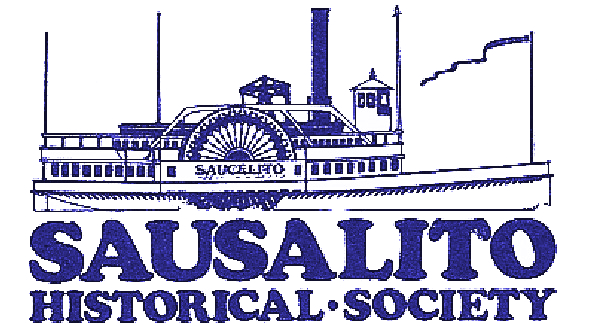Nora Sawyer,. Sausalito Historical Society
The morning of June 13, 1886, at 11 o’clock, a procession of girls in white dresses set out from grocer Antone Lawrence’s store on Caledonia Street bearing a silver crown. Led by flag bearers carrying Portuguese and American flags, the girls marched to the Catholic Church, where resident priest Father Valentine placed the crown on the altar before delivering his sermon in Portuguese. The Sausalito News reported that “the church had never before been so crowded, and although well-ventilated, several persons fainted.” After the service came a “plentiful repast,” with “most of the congregation” in attendance.
It was the culmination of a week of celebration, the first Festa do Espírito Santo in Sausalito. For the uninitiated, the Sausalito News explained that the week was “one of special devotion and celebration by our Portuguese residents,” and that what British residents would have called Whit-Sunday “is to the Portuguese a day of both religious and national observance in somewhat as St. Patrick's Day is to the Irish people.”
The festival, which had “for four hundred years past has been devoutly observed by the Portuguese all over the world, where ever seven families could join in the celebration,” marked seven Sundays since Easter. “For seven weeks,” the News reported, “the poor have been remembered, and tribute paid to the respective seven spiritual gifts.”
The Festa’s origins date back to the 13th century, commemorating the “deliverance of the Azore Islands from protracted drought.” According to legend, the starving populace was saved by the piety and generosity of Queen Isabel, who traded her crown for a ship full of provisions. Rejoicing, “the people with one accord made a vow” to mark the Feast of Pentecost “offering everywhere in their churches, a Solemn Mass of Thanksgiving and that the poor should be fed with bread, meat and wine.”
Amongst the bounty of the new world, the focus of the celebration changed somewhat. As the Sausalito News noted, “in America, or at least in our favored section of California, the absence of grinding poverty has somewhat transformed the social character of the celebration from a dispensing of charity to a universal hospitality.” This hospitality became a hallmark of Sausalito’s Festa.
From the festival’s founding until the mid-twenties, the week included a procession of cattle through Sausalito. Journalist Helen Kerr writes that “Portuguese cowboys” came over the headlands from as far away as Bolinas and Point Reyes, “dressed in their finest riding clothes” and ”picked up cattle and drivers as they moved toward Sausalito,” decorating the cows with “ribbons, bells and flowers” along the way.
One such drive is captured in the photo accompanying this article, the earliest image of the Festa in the Historical Society’s archives. Taken in 1900, the photograph shows cattle bedecked in flowers being herded north along Filbert Street, followed by revelers on foot. At the bottom left of the image, J.M. Roberto, who operated a dairy near Slide Ranch and would serve as president of the IDESST, rides on horseback.
After being led through Sausalito, the cows would either be auctioned off or slaughtered, with a portion of the meat being given to the poor, while the remainder was set aside for Sunday’s feast.
The following description of Sunday’s activities, which appeared in the Sausalito News in 1901, shows how little has changed. “Early Sunday morning the devout portion of the Catholic community can receive Holy Communion in memory of the day, but at 11 o'clock the solemn national Portuguese celebration commences.”
The celebration began with a parade from the Portuguese hall (then on Filbert Street) to St. Mary’s Church with girls in white “bearing in their midst a crown” representing the Holy Ghost and recalling Queen Isabel’s charity. At the church, the crown sat on the high altar for a second mass, after which it was “placed upon the head of an innocent maiden” for the procession back to the hall.
Finally, it was time for feasting. Then as now, “a bountiful banquet” commenced, at which “carne e sopas” were served. Later, “after ample justice has been done to the viands,” the festivities continued, with fireworks, music and the Chamarita, “a dance of national usage, and of a very innocent character.” The dance became so much associated with the celebration that many locals still refer to the festival as the Chamarita to this day.
On the morning of Sunday June 6, at 11:00, a procession of girls in white dresses will set out from the IDESST Hall on Caledonia Street bearing a silver crown. They will be led by flag bearers carrying Portuguese and American flags, and will march to St. Mary’s Star of the Sea accompanied marchers representing organizations from Sausalito and throughout the Bay Area. And so the tradition will continue, as it has in Sausalito for 133 years.

